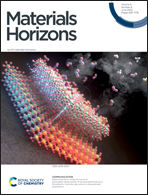Synergistic improvement of sensing performance in ferroelectric transistor gas sensors using remnant polarization†
Abstract
Gaseous pollutants, including nitrogen oxides, pose a severe threat to ecosystems and human health; therefore, developing reliable gas-sensing systems to detect them is becoming increasingly important. Among the various options, metal-oxide-based gas sensors have attracted attention due to their capability for real-time monitoring and large response. In particular, in the field of materials science, there has been extensive research into controlling the morphological properties of metal oxides. However, these approaches have limitations in terms of controlling the response, sensitivity, and selectivity after the sensing material is deposited. In this study, we propose a novel method to improve the gas-sensing performance by utilizing the remnant polarization of ferroelectric thin-film transistor (FeTFT) gas sensors. The proposed FeTFT gas sensor has IGZO and HZO as the conducting channel and ferroelectric layer, respectively. It is demonstrated that the response and sensitivity of FeTFT gas sensors can be modulated by engineering the polarization of the ferroelectric layer. The amount of reaction sites in IGZO, including electrons and oxygen vacancy-induced negatively charged oxygen, is changed depending on upward and downward polarization. The results of this study provide an essential foundation for further development of gas sensors with tunable sensing properties.



 Please wait while we load your content...
Please wait while we load your content...